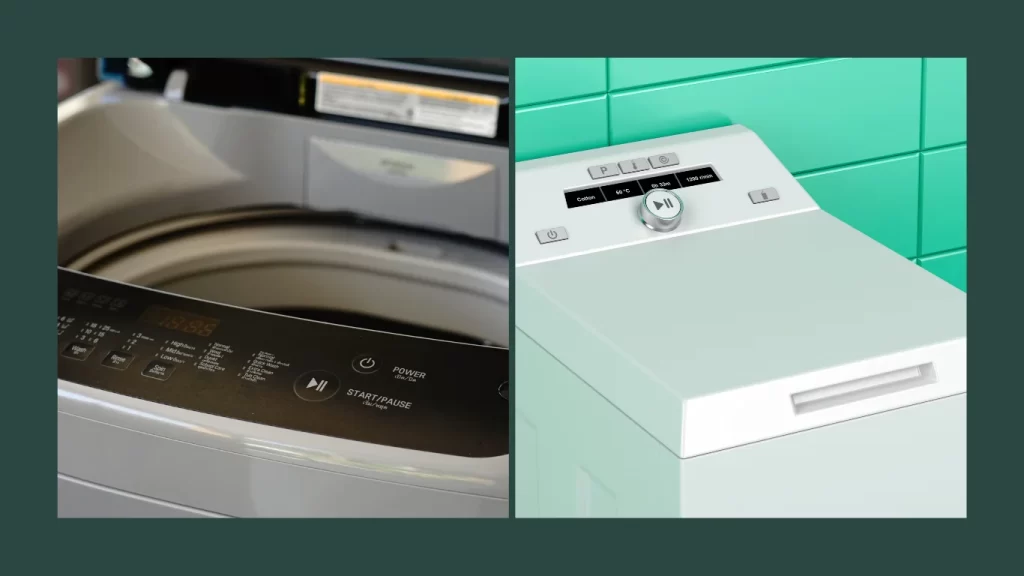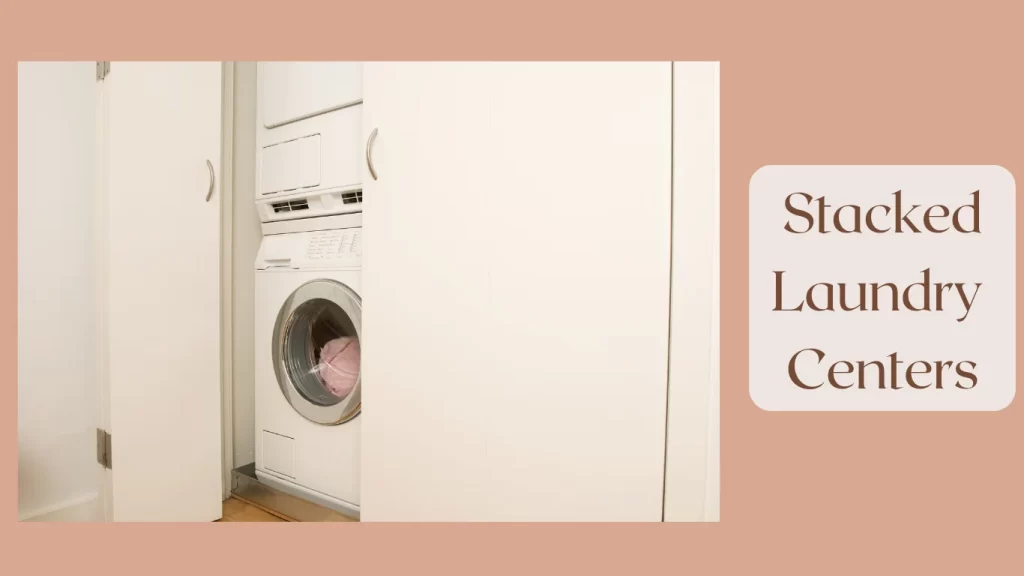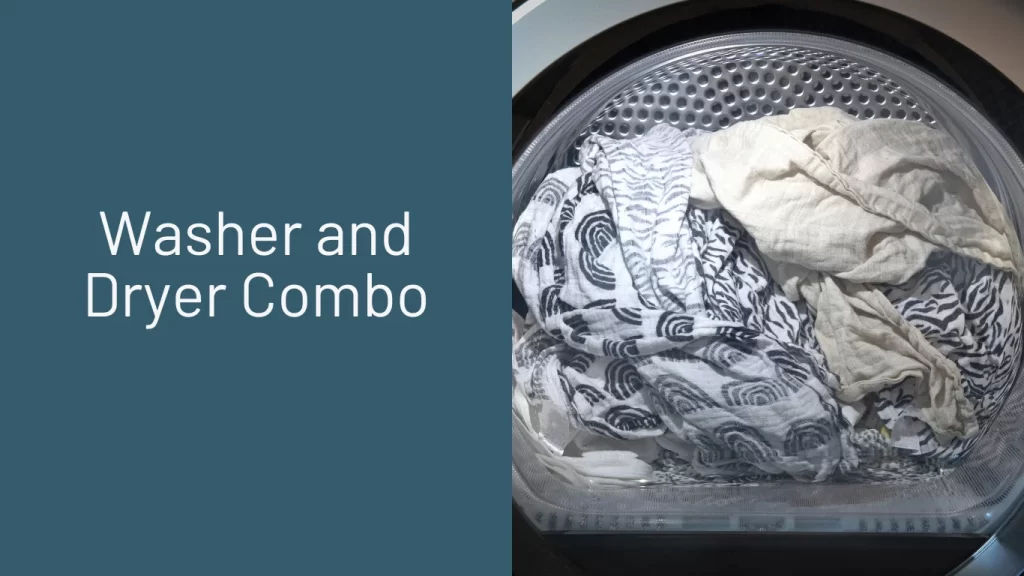Washing machines are available in various styles. Although they all do the same job, they differ slightly. With all the options available in the market, it can be hard to choose which one to purchase. This article will discuss the washing machine types and their differences and features. We hope that by the end of the article, you can easily decide which washing machine type is best for your family and your needs.
Front Load Washing Machine
As its name indicates, it is a front-load washing machine with a door in the front to load and unload clothes. When the machine cleans the clothes, the front load washer tumbles the laundry in a horizontal drum. This horizontal action creates friction between the items in the washer. A front-load washing machine generally uses less water than other washer types, such as a top-load washer. This washing machine allows a dryer to be stacked on top—a great option for people trying to save space.
Top Load Agitator Washers

Top-load washing machines are loaded and unloaded from the top. This type of washing machine uses a tall spindle that twists back and forth, which rubs clothes, helping break down and loosen the soil. One of the advantages of a top-load washing machine that you cannot find in a front-load is that it allows for deep water washing, often resulting in cleaner, more deeply washed items.
Top Load Impeller Washers
This washing machine allows you to load and unload clothes from the top, similar to top load washers with an agitator. However, the washing process is the difference between these two top-load washers. In a top load agitator, the washing is facilitated with an agitator, but in top load impeller washers, it is with an impeller. An impeller is a low-profile cone or disc that rotates and rubs clothing against one another to clean them.
This washing machine has a larger capacity and is great for big bulky items because the impeller doesn’t take up as much space compared to an agitator.

A stacked laundry centre has a top-load washing machine and dryer built into one big frame. If you’re looking into a top-load washing machine with a stacked setup to save space this option is your best bet. Additionally, this combined setup doesn’t require installation because the machines are already built into one unit.
Washer and Dryer Combo

A washer-dryer combo is a machine that washes and dries laundry in the same drum. This two-in-one appliance is great for people looking to save space. These machines have more features and settings than stacked laundry centers and usually come in a front-load design.
Compact and Portable Washing Machine
If space is an issue, your best bet is a portable washing machine. These are usually the smallest options on the market, available in top-load and front-load models. The best thing about them is that they can be stored in a closet or room until necessary for use. They usually include a hose that connects to the kitchen or bathroom faucet and a drain hose placed in the sink or bathtub.
Things to look for when buying a washing machine
Washing machines vary depending on size, features available, brand, drum size, and more. There are lower-priced models, smart appliances on the more expensive side to help you streamline your routine, and compact and space-saving washers. Here are some points to consider when buying a washing machine.
Cycles
Every family has its own needs when it comes to washing machine cycles. Some families need a sanitised cycle for the daily workout clothes that must be washed, and others require a deep clean cycle for the constant stains on kids’ clothes. Before buying a washing machine, make sure to review its cycle options and buy the one that has the most relevant cycles for your family’s laundry needs.
Features
– Washing machines with Wi-Fi-connected features enable you to control them remotely.
– Load and Go Dispensers such as in the Whirlpool washers allow you to fill detergent for 20 – 40 loads to skip adding it every time you start a load.
– Instead of mixing hot or cold water, the Auto temp control adjusts the water according to your selected setting.
– A signal that your cycle is completed, whether a tune or beeping sound, the washing machine will notify you when it’s time to transfer the laundry to the dryer.
Size
Washer sizes vary from compact 1.5-3.4 cu. Ft to standard 3.5-4.4 cu. Ft. and lastly, large 4.5 + cu. Ft. Consider your family and your laundry needs and decide whether you’ll need a small, medium, or large washing machine.
Electricity consumption
The amount of energy consumed by a washing machine is significant. Nobody wants high energy bills; therefore, check and compare the annual estimated bill from the brand and type of machine you’re considering buying.
Make sure to check out our Ultimate Laundry Guide.
Conclusion – Washing Machine Types
With all the available options, it can be confusing to decide on the best washing machine. Throughout this article, we reviewed the main washing machine types, from front load vs top washers to compact and more. Each house has different wants and needs; one with less space naturally goes with a compact washer. One with limited space may pick the 2 in 1 option. However, researching and knowing what you are looking for is the first and most important step before buying a washing machine. We hope this washing machine types article narrowed down and simplified the pros and cons of washing machines you’re interested in.
What are the 5 types of washing machine?
There are five types of washing machines: front-load, top-load, top-load agitator, top-load impeller, and washer and dryer combo.
Is an impeller or agitator better?
A top load impeller washer has bigger capacity than a top load agitator washer. An impeller is better for bulky and bigger items.
Which type of washer is better?
A washer is specific to every household. Some require a washer with a more rigorous intensified cycle, while others need a sanitised cycle. Some have minimal space for a washer, and some have a designated area for a stackable washer.





